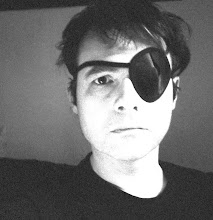
So, what is a chap to do in the immediate aftermath of completing an MA in Illustration (whilst waiting for all those lucrative commissions to come flooding in)? What, in particular, if said chap is having a bit of an identity crisis brought on by an MA project centred around the development of comic characters and narrative, after years of striving for accurate natural-history illustration? What if you don't know which way to turn?
This is the time when, inevitably, one's thoughts turn to pterosaurs. Old friends from childhood. Familiar, but still surprising. Still confounding every expectation.
I really wanted to get back into some detailed, technically accurate work, while at the same time feeling loth to relinquish my newly honed powers of caricature and stylization. Pterosaurs somehow answer both needs, being both utterly beautiful and totally bizarre, with the most extraordinary proportions of any animal. In many species the head really is quite a lot larger than the torso. I could never get over that. But I have been checking the measurements of my cast of that famous specimen of Pterodactylus kochi from the Solnhofen limestone, and there it is; skull, approximately 80mm; neck approx 60mm; shoulder to hip, approx 40mm. Wonderful!
When I was a kid in the 1970s, pterosaurs had a terrible public image. I still have books which insist that as "cold-blooded" reptiles they would have been too sluggish to be capable of active flight. And with that floppy wing-membrane supported only by a single finger at the leading edge, they would never have had the fine control of birds or bats, and a bit of half-hearted paragliding would have been the most they could manage... Now we know so much more. It is now accepted as fact that they were true and active fliers, that their bodies had a hair-like covering for insulation, and that the wing membrane wasn't mere skin but a complex, multi-layered structure, reinforced by muscular fibres that would have given such precise control that the flying abilities of these creatures probably surpassed those of birds.
For a while in the '90s, it almost seemed to go a bit too far, with suggestions that pterosaurs on the ground strutted and ran around on their hind-limbs alone. Personally I was never happy with the idea of pterosaurs as bipeds. They're just not the right shape for it. The weird, quadrupedal, "cowboys on crutches" stance described by Dr Unwin is so much more appealing, because it is so uniquely their own.
Lots of pterosaurs had strange crests, but until recently Pterodactylus was not thought to be among them. However, the latest research shows that at least some specimens did have a head-adornment of cartilage or other soft tissues which didn't always leave much of a fossil impression.
Colours? Total guesswork, of course. Pterosaurs would certainly have been quite boldly coloured. There are some absoluitely wonderful "palaeo-artists" (come on, you know who they are!) who have a glorious tendency to depict all dinosaurs and prehistoric creatures in general looking as if they had been in an explosion at a paint factory. Personally I prefer a slightly toned down appearance; I think most pterosaurs, given what little we know of how and where they lived, would have been coloured a bit more like seabirds than like birds-of-paradise. But who knows...?
